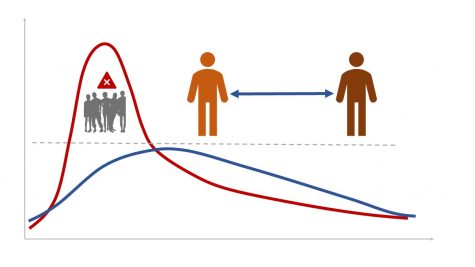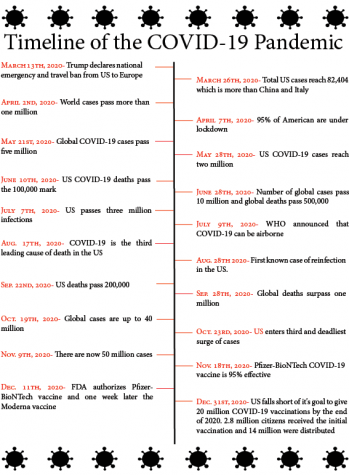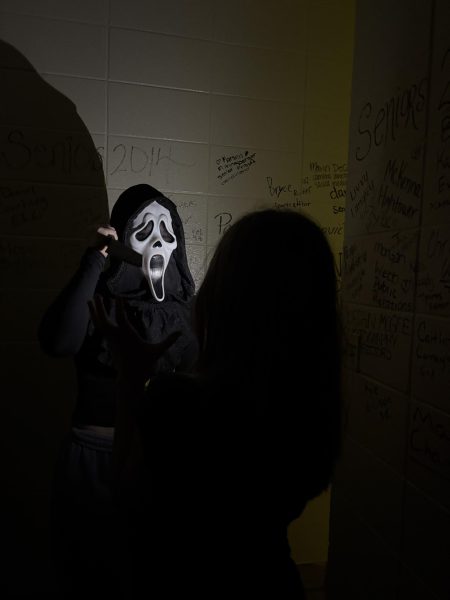Year Since Quarantine
February 12, 2021
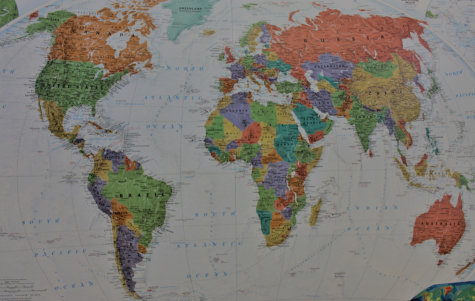
March of 2021 marks one year since everyone’s lives changed forever. Now it’s time to visit upon the details to see what unfortunately hasn’t changed and answer misconceptions about this pandemic.
Thinking back to March 2020, students around the world were excited to have a couple extra weeks of Spring Break, sleeping in, and staying home. Somehow that period of time turned into a never ending cycle of sanitizing, mask wearing, and social distancing. March of 2021 is quickly approaching and the cycle is still continuous. It’s going to officially been one year since everyone’s lives changed forever, one year since the world as we knew it vanished, and one year since countries across the globe have been living in a state of quarantine.
WHAT HASN’T CHANGED:
Virtual learning: At the beginning of the new school year, Kickapoo students and others across the nation got the opportunity to learn virtually from home. Since March of 2020 to March of 2021, students are still learning from the comfort of their own homes.
In class schedule: If learning from home just wasn’t for you, then high school students were flexibly learning with the new in class schedule. Until February 1st, students were broken up alphabetically and attended school two days a week, allowing a three day period for online learning and a day for cleaning the school. As of February 1st, the hybrid schedule changed and students are now attending four days a week. Currently, all SPS students are attending school four days a week with the exception on Wednesdays.
Sanitation: With the new COVID-19 school year, students are required to use hand sanitizer before entering and exiting the classroom. Before leaving each period tables need to be wiped down by a sanitizing solution that the school provides before leaving to the next class. To promote cleanliness, odd number classrooms leave one minute after the bell, water fountains are currently unavailable to students, assigned seating is mandatory at lunch, and school releases are organized by grade.
Safety: Students are still required to be masked at all times, with the exception of lunch. Students have to wear a mask that covers their mouth and nose. Everyone is still following social distancing guidelines by social distancing when possible.
Half capacity: Places around the world are only allowing people into their building at half capacity. Most restaurants have opened up for dining in but masks are required when you’re not seated. Shopping centers still count how many people are currently in the store and half capacity signs are hung on the outside of walls and windows of many places.
COVID-19: Obviously and unfortunately, COVID-19 is still very much existing. Though as a nation we are slowly taking steps forwards such as dropping stay at home orders, going out with friends, worshipping at church, and other activities everyone enjoyed before the world shut down. The mask mandate is still in effect and most are doing what they can to be safe while in the public eye and likely will be for much longer.
While we are continuing to live our lives to what we consider the new normal, we are finding out much more about COVID-19 than we ever have before. Hopefully with the future months, we can say goodbye to 2020’s continuous pandemic. Finally we could step out and breathe fresh air, hug our friends, and gather with others. For now, everyone’s just adjusting to the new normal, which doesn’t seem to be very new anymore.
Over the course of the COVID-19 pandemic the media has been responsible for all different types
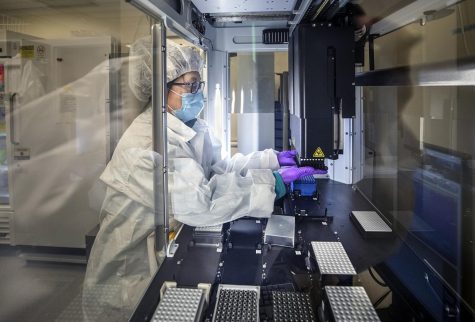
of rumors. Down below are some of the most common misconceptions of the virus and the correct and appropriate answers to them.
Myth #1: COVID-19 was purposefully created by people.
Truth: Viruses change over the course of time. Animals such as pigs and birds carry viruses that can pass to humans. Scientists say that COVID-19 originated from bats which passed to humans and from that point, spread across the world.
Myth #2: Children will be forced to receive the
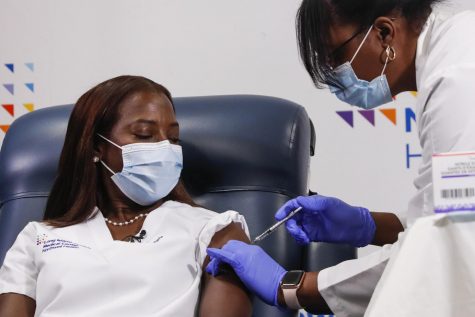
COVID-19 vaccine.
Truth: Currently the Pfizer-BioNTech vaccine is for people 16 and older and the Moderna vaccine for people 18 and older.
Myth #3: The purpose of wearing a mask is to protect myself from getting sick.
Truth: No mask can keep all of an infected droplet out, but more importantly, the mask keeps in the infected droplets to protect others around.
Myth #4: The COVID-19 vaccine contains a microchip.

Truth: No injections, COVID-19 related or not, contains microchips, nanochips, or a tracking device. Similar to the way shipments and deliveries are tracked, shipments of the injection will
be closely monitored as they are sent and given to citizens across the country.
Myth #5: You have to be elderly or have an underlying
health condition to become seriously sick or be admitted into the hospital.
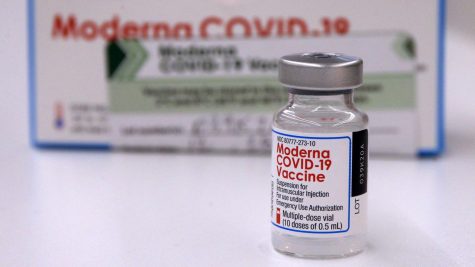
Truth: No matter what age, people all over are becoming sick from COVID-19. The risk of catching the virus can increase with age, underlying diseases, diabetes, severe obesity, and more, but COVID-19 affects everyone; from infants to the elderly.
Myth #6: Wearing a mask will make me sick from breathing in my own carbon
dioxide.
Truth: Before COVID-19, health care workers have worn masks without any side effects. The CDC recommends cloth masks since they are more

breathable. Wearing masks does not increase your risk for hypoxia, which is when your oxygen levels drop. Also, the carbon dioxide will move throughout your mask as you inhale and exhale.
Myth #7: The virus will disappear when the summer season arises.
Truth: Some viruses, like the cold and flu, spread easier within the colder months. Scientists are not completely sure, but evidence suggests that COVID-
19 can be transmitted no matter what temperature.
Myth #8: Once a person gets the vaccine, they do not have to wear a mask or social distance.
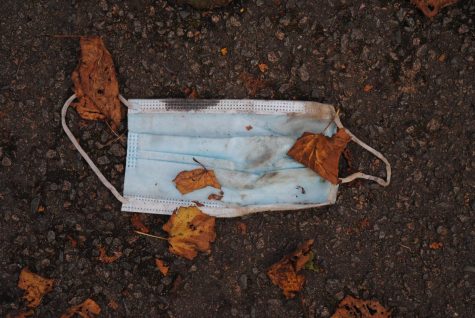
Truth: When you get your first dose of the vaccine, a person doesn’t not become immediately immune to the virus. “It takes at least a week to 10 days for your body to begin to develop antibodies and then those antibodies continue to increase over the next several weeks,” says Chairman
of the Department of Inflammation and Immunity at Cleveland Clinic’s Lerner Research Institute, Dr. Thaddeus Stappenbeck.
Myth #9: Now that people are starting to get the vaccines, the pandemic will be
over quickly.
Truth: When the disease is no longer likely to spread, which is called herd
immunity, 70% of the population will need to have been

vaccinated.
Myth #10: Once you catch COVID-19 one time, you’re automatically immune.
Truth: It is rare, but the CDC has reported cases of
reinfection throughout the span of the COVID-19 outbreak. Scientists theorize
that similar to other viruses, you can catch COVID-19 more than once.
“In addition, we do not know for certain how long the antibodies will last and if they will prevent future
infection,” says Dr. Segal- Maurer, director of the Dr. James J. Rahal. Jr. Division of Infection Diseases at New York Presbyterian Queens.
